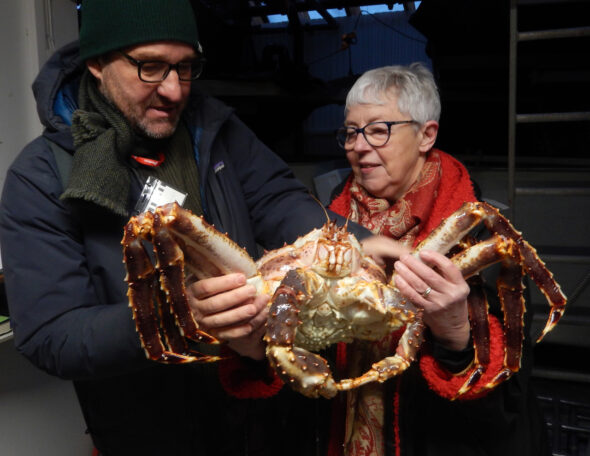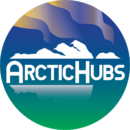A snapshot of some of the activities conducted by the ArcticHubs NOFIMA research team in Ringvassøya island and Tromsø.
![]() After several productive workshop days indoors at the NOFIMA offices in Tromsø last January, ArcticHubs researchers maintained their tradition of always embracing a hub field visit to further stimulate ideas and an understanding of the multi land and sea use realities in the Arctic region today. The destination this time was to the island of Ringvassøya, home to the Tromsø Aquaculture Research Station.
After several productive workshop days indoors at the NOFIMA offices in Tromsø last January, ArcticHubs researchers maintained their tradition of always embracing a hub field visit to further stimulate ideas and an understanding of the multi land and sea use realities in the Arctic region today. The destination this time was to the island of Ringvassøya, home to the Tromsø Aquaculture Research Station.
Ringvassøya island is situated in an ideal location to consider the interactions between aquaculture, tourism and fishing.
In Ringvassøya we spoke with NOFIMA researcher Dr Sten Siikavuopio, about some of the emerging insights growing out of the ArcticHubs research.
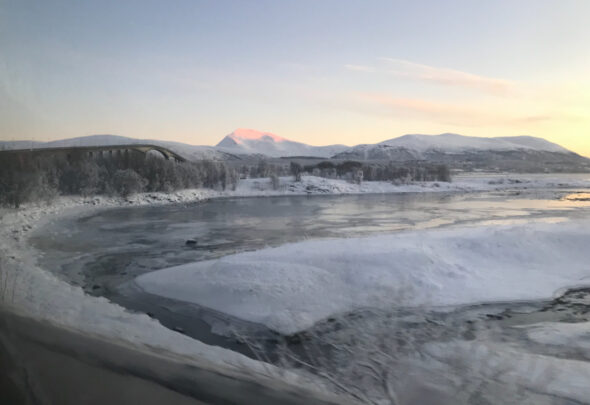
First introduced in the Winter 2022 edition of ArcticHubs newsletter (link), we had an opportunity to directly observe the site where CodGIS research 🐟 has thrown up some fascinating results.
Pointing out across the fjord Sten explained,
“There you have the facilities for the salmon farm, and in this area, the cod were moving for one year with this transponder after we had tagged them and followed them all year. And what we saw that was the wild cod prefer to stay under the sea cages of the salmon farm. It was easy food for them. It was like a fast food’s restaurant where they could easily get food enough. So the cod is actually changing behaviour.”
Testing CodGIS is just one strand of research being conducted in the research centre.
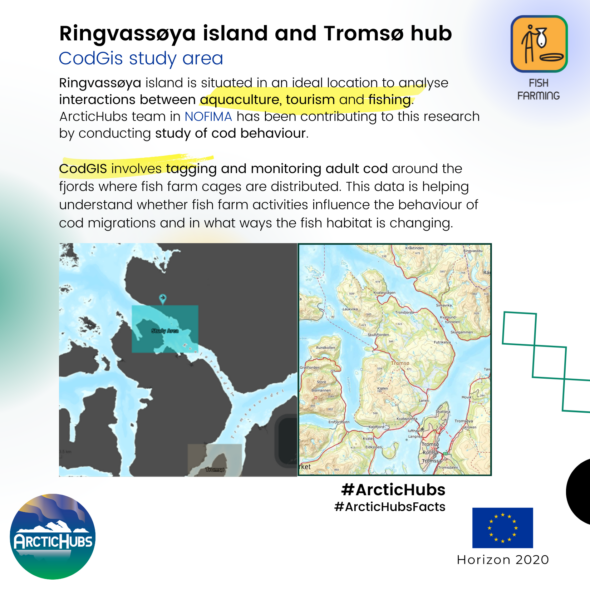
Sten outlined how the NOFIMA team was also working to interact directly with the salmon farms in order to generate more sustainable operations. This has come in the form of aspects such as the input of more sustainable feed alternatives for the farmed salmon, to the use of recycled fresh water in the propagation of salmon smolt.
Recent aquaculture options in the area and invasive species
We also had the opportunity to view ongoing research around the aquaculture options in the area that extend across other marine species including culture of sea urchins, snow crabs and wolf fish.
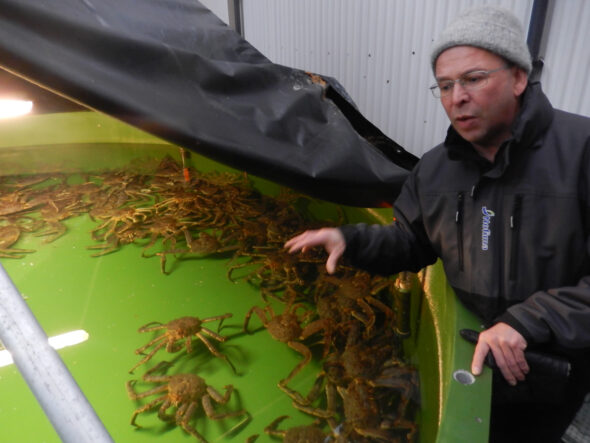
Most intriguing of all however, are the studies concerning an invasive species that initially caused considerable consternation throughout the fishing communities in Varangerfjord hub (read more also here and here).
The red king crab (Paralithodes camtschaticus) is undergoing a remarkable transformation in how it is viewed by fishing communities.
Moving from a position as a villain of the piece, as the king crab’s invasion and impact on unexpecting marine ecosystems, to a prized asset once its market value was understood.
More informed management of the species in the region has therefore became even more important. As a consequence, the work being conducted by NOFIMA around the crab’s life cycle, and its interactions inside its new home in Norwegian waters has taken on even greater significance.
